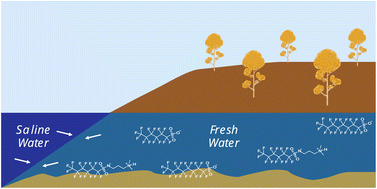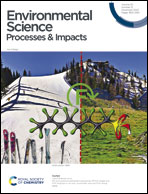Enhanced aggregation and interfacial adsorption of an aqueous film forming foam (AFFF) in high salinity matrices†
Abstract
Per- and polyfluoroalkyl substances (PFAS) exist in contaminated groundwater, surface water, soil, and sediments from use of aqueous film forming foams (AFFFs). Under these conditions PFAS exhibit unusual behavior due to their surfactant properties, namely, aggregation and surface activity. Environmental factors such as salinity can affect these properties, and complicate efforts to monitor PFAS. The effect of high salinity matrices on the critical micelle concentration (CMC) of a AFFF formulation manufactured by 3M and the surface accumulation of PFAS was assessed with surface tension isotherm measurements and bench-scale experiments quantifying PFAS at the air–water interface. Conditions typical of brackish and saline waters substantially depressed the CMC of the AFFF by over 50% and increased the interfacial mass accumulation of PFAS in the AFFF mixture by up to a factor of 3, relative to values measured in ultrapure water. These results indicate that high salinity matrices increase the aggregation and surface activity of PFAS in mixtures, which are key properties affecting their transport.

- This article is part of the themed collection: Contaminant remediation and fate


 Please wait while we load your content...
Please wait while we load your content...
